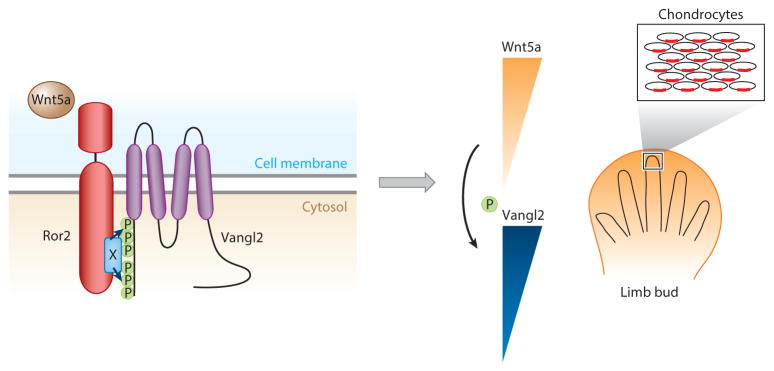Figure 4.
The Wnt5a gradient controls directional limb elongation by regulating planar cell polarity (PCP). The Wnt5a signal induces Ror2-Vangl2 (Van Gogh–like 2) complex formation; it is likely that a Frizzled family member also serves a key function as a Wnt coreceptor in this complex. As a result, Vangl2 is phosphorylated at conserved Ser and Thr residues in a Wnt5a dose-dependent manner. Therefore, a Wnt5a gradient is translated into a Vangl2 phosphorylation gradient. As Vangl2 activity appears to be regulated by phosphorylation (Gao et al. 2011), the Wnt5a gradient is translated into a Vangl2 activity gradient in the limb. A chondrocyte in the middle of the newly formed cartilage can sense its positional information by comparing Vangl2 activity with that of its immediate neighbors through cell-cell interactions. Such cell-cell interactions eventually lead to asymmetrical Vangl2 protein localization through feedback loops, laying the groundwork for further asymmetric cellular behavior, such as directional cartilage elongation.

